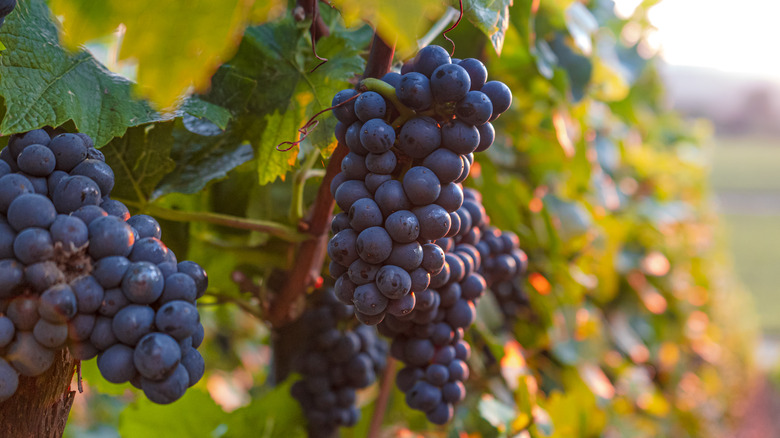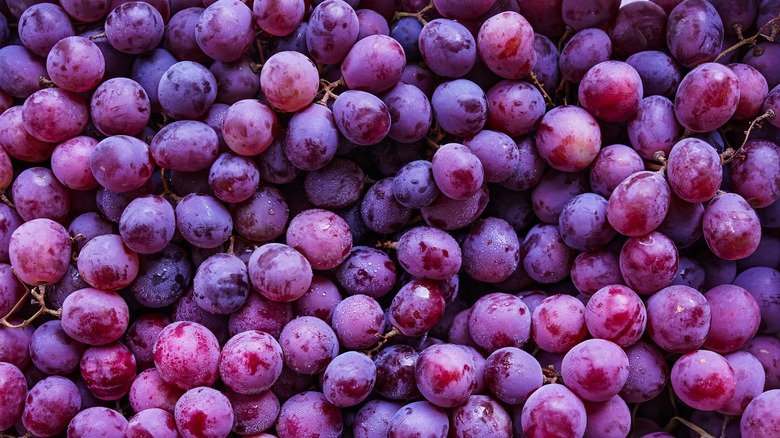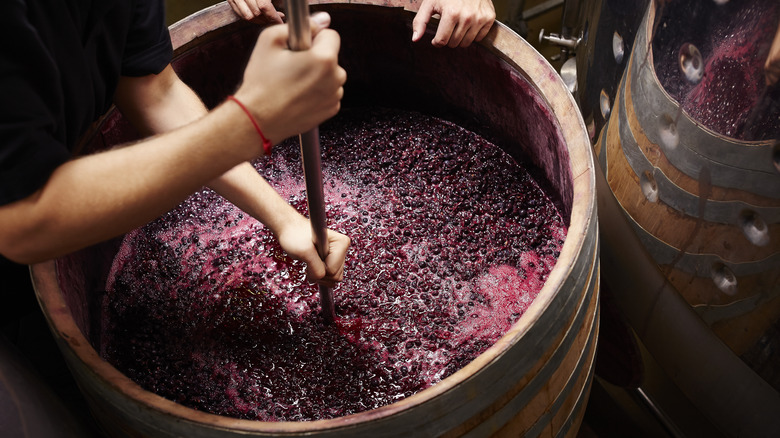What's The Difference Between Grape Must And Juice?
Whether you're more familiar with the lighter variety that comes from green grapes or the dark purple juice often seen at Passover, you've almost certainly had grape juice before. What you might be less familiar with, however, is the process of making it. Squeezing grapes into a liquid doesn't just result in grape juice, but also grape must.
Both grape juice and grape must come from the same grapes being smushed, but they are very distinctly not the same thing. While juice is designed to be drunk as a commercial product all on its own, you'll never see grape must for sale in the beverage aisle. This is because it's not supposed to be a refreshing drink. Instead, it's an important part of the production process for the other, distinctly more adult grape-related beverage: wine. In fact, grape must isn't even entirely liquid.
Grape must and grape juice diverge after the initial pressing process
It may be fun and whimsical to refer to wine as "alcoholic grape juice," but that's not actually accurate. There are basically two methods to make grape juice: Either you boil the grapes, or you press fresh grapes after removing material like the stems. The latter is typically how commercial grape juice is made, but the end result of both processes is the same — a smooth, consistent, grape-flavored liquid you can find in any grocery store.
By contrast, grape must isn't designed to be its own thing, but rather a step on the journey in turning grapes into wine. Must doesn't involve stems, seeds, or grape skins being removed — they're actually left in. These solid components are referred to as "pomace," and their purpose is to soak in the must. This process is known as maceration. It breaks down the plant's cell walls and releases desirable chemicals, which begin the fermentation process. Whether you get red or white wine depends in large part on how long the must is left to macerate.
Grape must eventually becomes juice (but not the juice on store shelves)
Grape must is pressed again after maceration, straining out the pomace and removing all remaining juice from the skins. (Some of the must might be reserved for use as a sweetener, at which point it's called "süssreserve.") Only after this final pressing is the juice allowed to fully ferment into what will eventually become wine.
Wait, "juice?" Isn't that just grape juice again? Technically yes — at this point, it's no longer must, and has become juice. But commercial grape juice skips the maceration process entirely, going directly from fruit to liquid and never fermenting. This is the same reason why non-alcoholic wine is not just grape juice — because it's subject to this same process. Non-alcoholic grape wine actually does get fermented after macerating in grape must, and the alcohol gets removed later.
Thus, while grape must and grape juice are similar, they never actually overlap. Liquid from grapes can either become juice, or it can become must (and then juice, and then wine), but ne'er the twain shall meet. Just don't ask us how wine gets made out of bananas.


